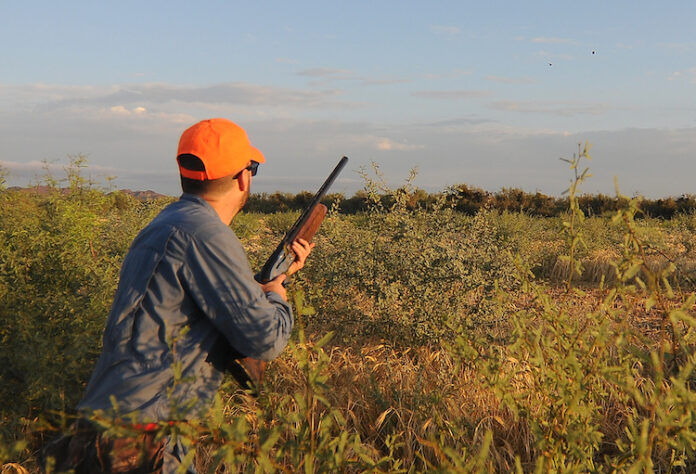By JIM MATTHEWS
Between a better dove hatch than normal and great winter and spring rains that left feeding areas lush, this year’s dove season opener is expected to be better than last year – perhaps better than the past several seasons – for Southern California public land bird hunters.
“As long as the weather cooperates and they don’t beat feet, the dove opener looks phenomenal,” said Scott Sewell, refuge manager at the Imperial and San Jacinto wildlife areas. “Every place is looking really good and we’ve started mowing in both areas.”
For Imperial Valley hunters, Sewell said the Finney-Ramer Unit fields – 138, Game Farm, and the Wheat Field – all were planted in wheat this year and “look, really, really good.” On the Wister Unit, Sewell said the same fields that were planted last year again have wheat this season. They include portions of 513A, 312A, and 115 along Highway 111 with the north portion of Y14 just south of the Wister headquarters also planted. Maps of all of these areas are usually available at Wister and online before the opener.
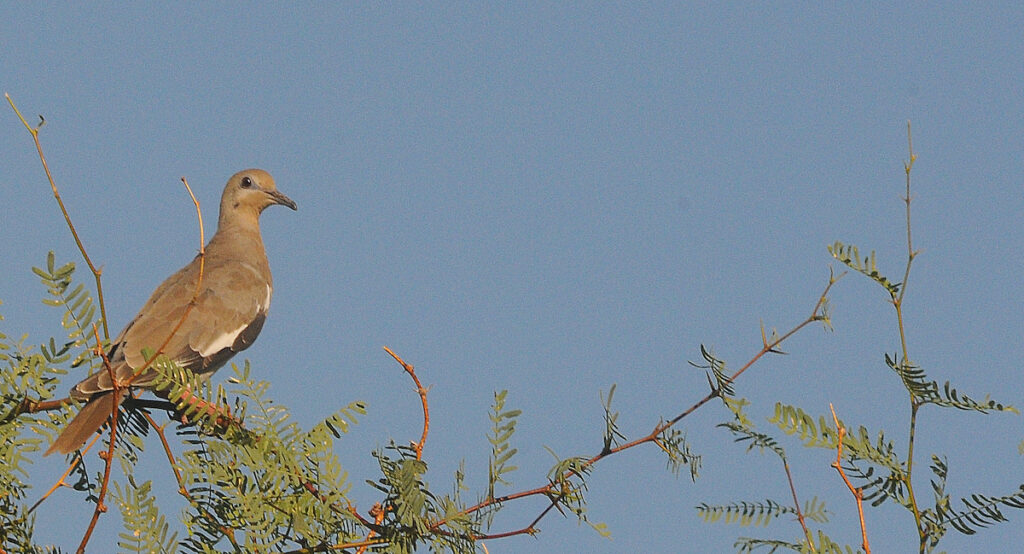
The Desert Wildlife Unlimited fields are also the same as last year, according to Rob Yates with DWU. Yates said the 17 fields were planted again this season with wheat. Mowing was underway and should be completed well before opener so birds can start aggregating on the grain.
“Last year, the whole thing ended up falling on its face completely,” said Yates. “We never got the Fish and Game grant funding and the fields were done out-of-pocket, which was devastating for us.”
Yates said they frequently fund out-of-pocket, but the grant funding comes through later and they are reimbursed. Last year’s DFW fiasco drained the non-profit’s accounts to almost nothing, and the group had not had a fundraiser since 2019. Fortunately, DWU had a very successful fundraiser in June this year and the DFW did fully fund the grant for the fields.
One of the casualties of the DWU’s funding problems last year is this year’s pheasant rearing and stocking program. The DFW’s funding for this program has never covered much of its costs but between DWU and the Imperial County Fish and Game Commission, there was enough money to do the planted pheasants each year. Yates said the money from this year DWU’s fundraiser came too late to get chicks and do the program this year.
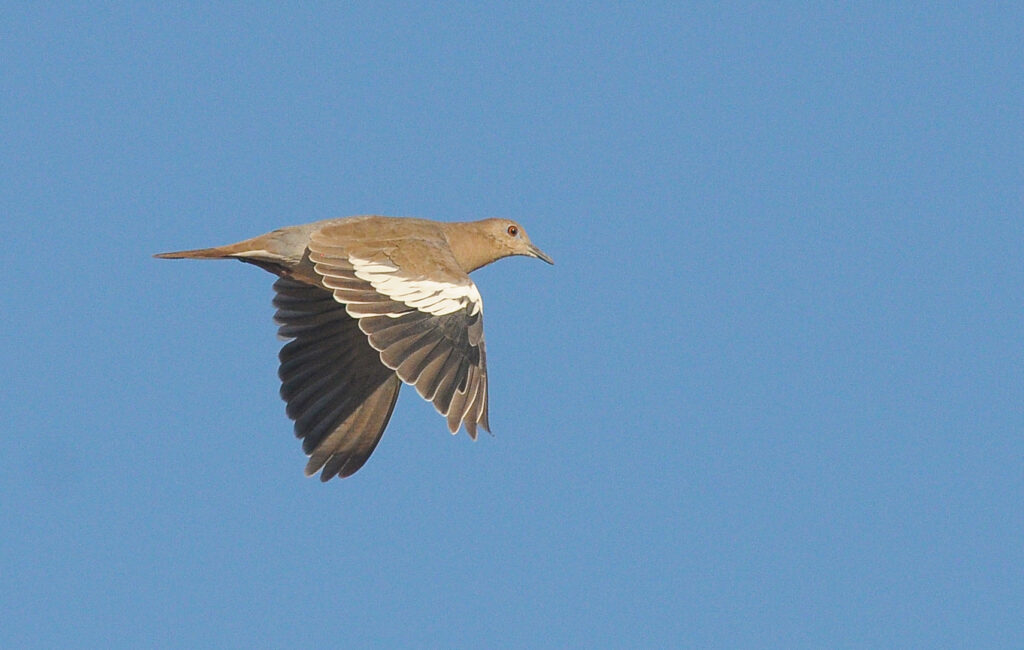
Yates said this year’s dove hunters can use the same field map that was published last year for their scouting and hunting. This map is still available on the DFW’s website (wildlife.ca.gov) via the Upland Birds page.
Mendal Woodland of Woodland’s Hunt Club said the entire Imperial Valley was holding an amazing number of whitewing dove right now, in addition to the usual big numbers of mourning doves. But that is common for this time of year. The whitewings usually start migrating south by the end of August so he expected for those numbers to dwindle some. He said he still expected a great shoot this year for hunters in the valley. For dove hunters interested pre-scouted, private land dove hunting, Woodland said he has six locations this year and that he will shoot up to 75 hunters opening day on these fields and feedlots. Price is $300 per person per day. More info is available on his website at whuntclub.com.
At the San Jacinto Wildlife Area near Lake Perris, the wet spring has led to a great food crop for 2023, according to Sewell.
“Bridge Street looks phenomenal. The wheat is robust this year and we started mowing swaths through it this week. Dove use is amazing, and I’m expecting one of our better dove seasons this year,” said Sewell.
Sewell said there are also planted fields on the west side of Davis Road close to Ramona Expressway, and that the fields above the E-Ponds were also being mowed for doves.
In the Blythe region of the Colorado River, the DFW fields on the Palo Verde Ecological Reserve off Second and Sixth Avenues were also planted in wheat this year. Sewell said the fields looked incredible with a huge seed crop that should attract and hold birds throughout the first season and probably in the second season as well.
On the Arizona side of the Colorado River, the Cibola National Wildlife Refuge will not have wheat fields on the Island Unit as it has done for the past three seasons. Those fields are in alfalfa this year. John Rosenfeld with the Friends of the Cibola National Wildlife Refuge said the good news was that Farm Unit II was planted with safflower and there “are tons of doves.” He also noted that 80 acres of the Island Unit’s ponds were planted with milo (before being flooded later this year) and were loaded with seed. The doves were already using these areas and Rosenfeld said there was going to be at least some mowing of the milo before dove opener.
In the Yuma region, most of the hunting takes place on the Arizona side of the Colorado River. Like California, the Arizona Game and Fish Department enters into cooperative agreements with landowners to plant fields just for dove hunting in this region. Maps to these fields and information on hunting areas are on the AGFD’s yumadovehunting.com website.
Rashawn Gordon, a Yuma-region dog trainer and guide, said he was “amazed about how many whitewings were here. It looks like it’s going to be really great.” Gordon has a limited number of dove hunts available on private grain fields. Pricing is $200 per day per person the first two days of the season and $150 per day for the remainder of the first season. He can be reached at 702-857-1714.
Yuma rolls out the welcome mat for dove hunters with a host of events. Sprague’s Sports in Yuma is dove central and a clearing house for information on the dove opener and community dove hunting-related events. Non-resident Arizona licenses are $160 for an annual hunting and fishing license or just $20 per day for short-term hunting licenses. A $5 migratory bird harvest information stamp (HIP) stamp must be added to the price of both types of licenses if you do not have a HIP stamp on your California license.
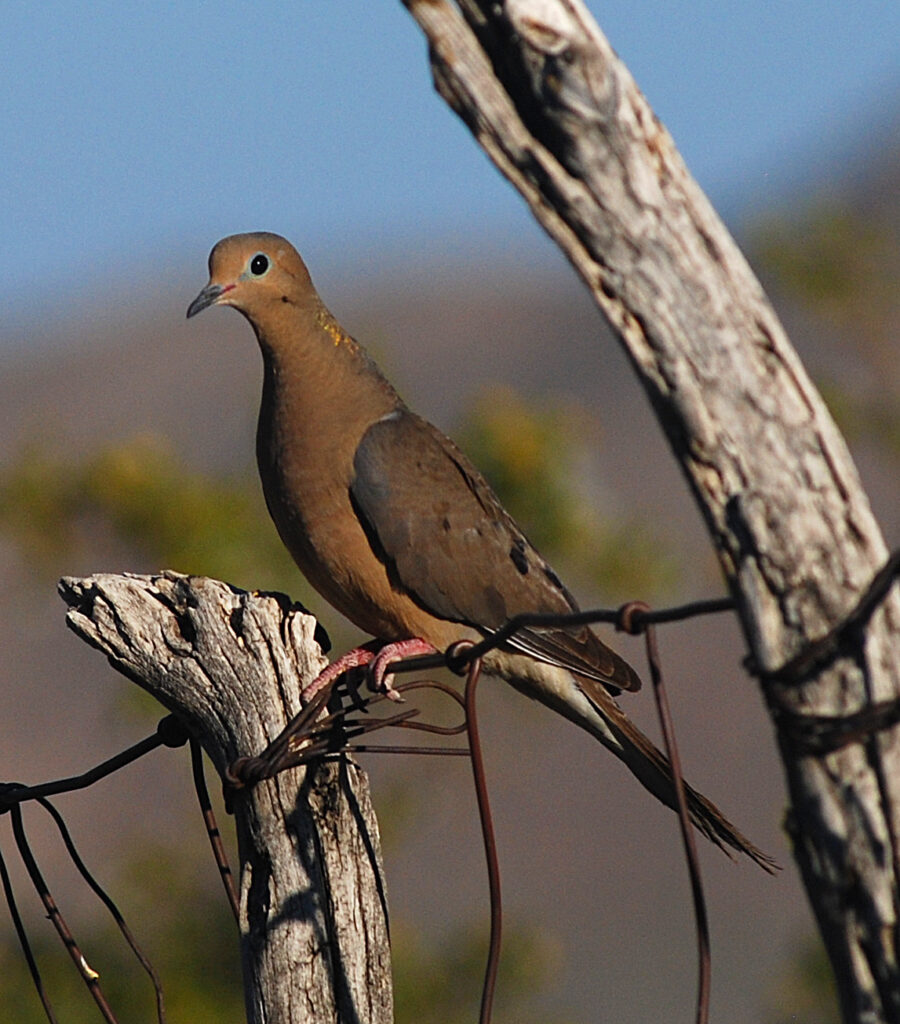
Normally, there is hunting on all five of the Indian reservations along the Colorado River, with all having reasonably-priced annual hunting licenses for non-resident hunters. This season the Fort Mojave Indian Reservation will not be open for dove or other small game hunting. This is the most northerly of the five reservations and sits on Califonia, Nevada, and Arizona lands north of Needles. While the California portion of the reservation has been closed for a number of years, the Arizona and Nevada portions had been open, usually with excellent hunting for doves.
This year’s dove hunting season runs from Sept. 1 through 15, with a second season running from Nov. 11 through Dec. 25. Bag limit is 15 doves per day, with no more than 10 whitewings in that daily bag. The possession limit is three-times the daily bag or 45 birds total after the third day of the season. This means that hunters may only possess 15 after the first day, 30 after the second day, and then a total of only 45 doves after the third day of the season. Hunters must keep a fully-feathered wing on their dove carcasses while in the field and during transport home.
There is always confusion about dove hunting near guzzlers, man-made game drinking sources. The law states that hunters may hunt up to, around, and even from guzzler aprons, but they may not stay at a guzzler for more than 30 minutes. This means no chairs or stools set up on these water sources and hunters parked there for long periods of time. This includes vehicles parked at guzzlers. If left for more than 30 minutes, vehicles must be parked at least 200 yards away from a guzzler. The purpose of this is to allow wildlife to go to water and drink (see story on hunting near guzzlers).
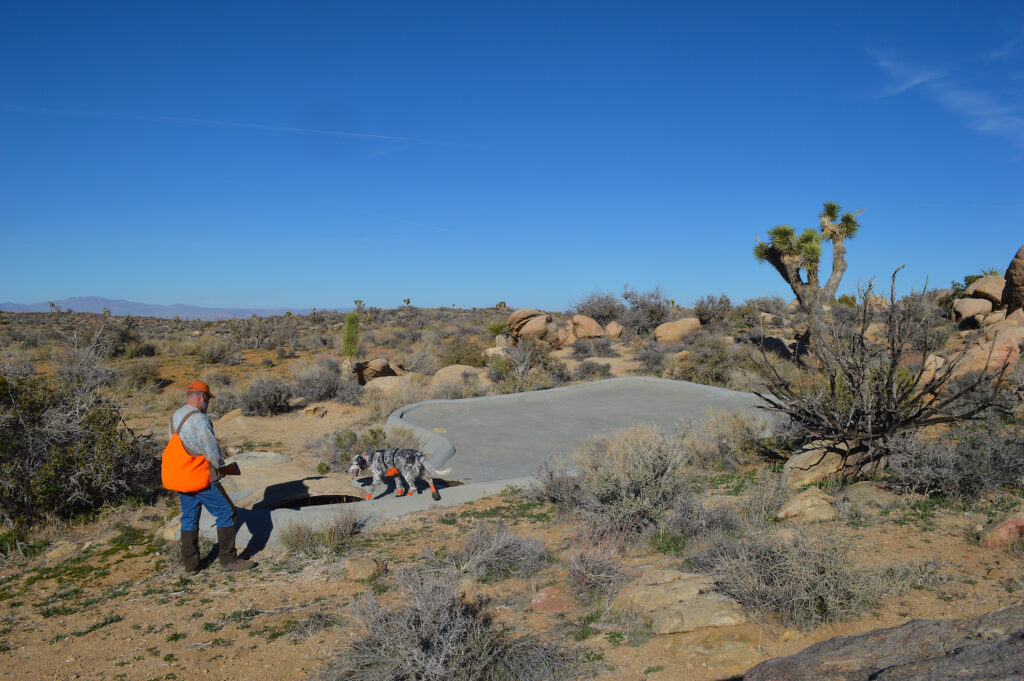
The rules for hunting near desert guzzlers
There has been confusion regarding hunting near guzzlers and other desert water sources like springs, cattle troughs, and small stock tanks. Even the Department of Fish and Wildlife has been guilty of misreading the statue and telling hunter it is against the law to hunt near guzzlers. That is simply not true. Here is why:
First here is the section from the Fish and Game Code:
- 730. Camping Near or Occupying Wildlife Watering Places.
(a) Camping/Occupying Defined. For purposes of this Section, camping/occupying is defined as establishing or inhabiting a camp; resting; picnicking; sleeping; parking or inhabiting any motor vehicle or trailer; hunting; or engaging in any other recreational activity for a period of more than thirty (30) minutes at a given location.
(b) Wildlife Watering Places Defined. For purposes of this Section, wildlife watering places are defined as waterholes, springs, seeps and man-made watering devices for wildlife such as guzzlers (self-filling, in-the-ground water storage tanks), horizontal wells and small impoundments of less than one surface acre in size.
(c) Prohibitions.
(1) Camping/Occupying is prohibited within 200 yards of the following:
(A) Any guzzler or horizontal well for wildlife on public land within the State of California.
(B) Any of the wildlife watering places on public land within the boundary of the California Desert Conservation Area as depicted on the Bureau of Land Management maps of “Calif. Federal Public Lands Responsibility,” “Calif. Desert Conservation Area” and the new “Desert District, B.L.M.”
What this code actually means for hunters: Section (a) defines “camping/occupying” as including hunting. So it effectively says “anyone hunting for a period of more than 30 minutes” at one of these Wildlife Water Places — which is also defined in Section (b) — is prohibited in the conditions under section (1). So to rewrite this in English, it would read like this:
“Hunting within 200 yards of a guzzler is prohibited if you do it longer than 30 minutes.” The same is true for the other restriction. “Resting within 200 yards of a guzzler is prohibited for more than 30 minutes.” “Parking within 200 yards of a guzzler or well is prohibited for more than 30 minutes.”
This is what the statute means. It DOES NOT mean it is illegal to ever hunt within 200 yards of a wildlife water source or guzzler.
If the state didn’t want you to ever hunt within 200 yards, the time specification of 30 minutes would not have been included in defining what is later banned. That means you can hunt up to and around any guzzler, even stand on the apron and shoot a flushing bird. But you cannot set up a lawn chair and sit there for hours and wait for doves to show up to what may be the only water source for wildlife for miles. You will get a citation for that.
This makes sense from both a sporting and resource standpoint. With the heat, you are preventing wildlife from using those important water sources by sitting or parking at them for extended periods of time.

